Drilling technology - For optimum sowing quality
Seeding technology allows for placing seed and other components via a metering system accurate to the gram in the soil precisely and in a targeted way.
The choice of the optimum seeding and singulation technology is influenced by external factors like site and seeding conditions as well as characteristics and requirements of the crop that has to be sown.
The grain size, the thousand seed weight and the shape of the seed play a major role as well as the ideal seeding time. The quality of the seed and of seeding also is an essential element. The quality of the seed is determined by the purity of the variety, the germination capacity and the germinative power. Three essential parameters for the seeding quality are the maintenance of the sowing density, the maintenance of the seed depth and the resulting emergence.
In the seeding technology sector, different metering systems allow for a precise application of the seed - for smallest fine seeds as well as for coarse-grained legumes or fertilisers. Mechanical or pneumatic metering systems offer different advantages.

1. The most common seeding technology in Europe is combined with an active or passive tillage.
Active tillage with a seed drill power harrow combination allows for creating a finely crumbled seedbed and for applying seed in the same pass – even in fields with winter furrow or with a lot of clods. It is ideal for farmers that rely on conventional tillage.
The seed drill in combination with a power harrow has the advantage of an active tillage directly in front of the seed drill even in most adverse conditions.
The integrated disc harrow as a front tool optimally prepares the seedbed. The tyre packer ensures the required consolidation and levelling of the soil. The double disc coulters then place the grain precisely. The pressure rolls ensure an even depth control and the required seed-soil contact of the drilled seed.
This kind of passive tillage allows for high operational speeds with a low horsepower requirement and a low fuel consumption.
terraHORSCH:
Pronto 7 DC: further development of the well-proven disc seed drill
Versa 6 SW: precision even in difficult conditions
Versa 3 KR – mechanical seed drill with additional value
Blog articles:
Pronto DC – the universal seed drill made by HORSCH
Pronto principle – 3 steps to success (II)
Pronto DC – well prepared for different conditions (III)
Further links:
DLG APPROVED 2023: Test report for the mechanical seed drill Versa 3 KR

2. Strip tillage (StripTill)
With strip tillage, also called StripTill, only the seed rows are cultivated – whereas the areas in between are not disturbed. This seeding method combines the advantages of conventional cultivation and no-till methods.
The harvest residues of the previous crop between the cultivated rows serve as an erosion and evaporation protection and have a positive effect on the soil structure as well as on the diversity of soil organisms. The site-specific tillage saves resources like fuel and fertiliser.
The deep loosening of the seed furrow offers advantages: The soil is better aerated and, due to the increased infiltration capacity, can absorb rain water more easily in these areas.
To ensure a good youth development, it is still possible to combine the StripTill method with underground fertilisation. Fertiliser, e.g. NPK or AHL, is applied directly via the tines.

3. Direct seeding
In the plant production sector, direct seeding refers to seeding directly without resp. with only little movement of the soil – this is why it is also called no-till. This method originally comes from regions with extreme weather conditions, e.g. the distinct dry periods in Australia or Kazakhstan.
As the soil is not cultivated with a plough or a cultivator, the interference with the soil is reduced to a minimum. The harvest residues of the previous crop remain undisturbed in the field and serve as a mulch layer on the surface. This results in advantages for the soil structure and the growth of the seed, e.g. erosion protection, the maintenance of the water reservoir and the reduction of the need for irrigation.
The challenge is to ensure a successful seeding of crops or catch crops even without deep tillage. For this purpose, direct seed drills have been developed that place the seed in the uncultivated soil in a targeted way.
This kind of seed drill – with disc or tine coulters – has a high coulter pressure and usually a larger row spacing. The application of fertiliser can also be integrated into the process.

4. Tine seed drills
Seeding with a tine seed drill is a cultivation method where the tines remove organic material from the seed furrow and place the seed on the water-bearing layer in the soil. A previous tillage is not required.
The tine seeding system is ideal for challenging sites to ensure a successful seeding despite unfavourable conditions. Due to the minimum soil movement, only little water is lost while seeding, similar to direct seeding versions with disc coulters.
Even high shares of biomass are no problem for this seeding system: the tines have a clearing effect and remove any obstacles as well as harvest residues. Thus, harvest residues that might affect the germination of the seed are completely removed.
Tine seed drills can be equipped with different coulter points to react to different local conditions and requirements. The individually depth-controlled tines are equipped with an additional press wheel to ensure a precise placement of the seed in the seed horizon and an even consolidation.
![[Translate to englisch:] Informationen zur Aussaat (Säverfahren)](/fileadmin/_processed_/a/c/csm_Pronto_4_DC_55bcc480d9.jpg)



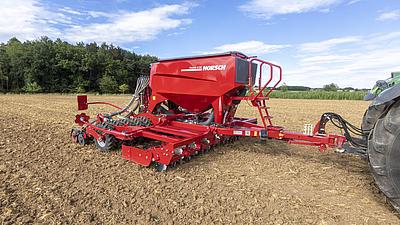
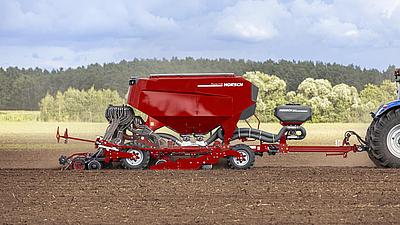
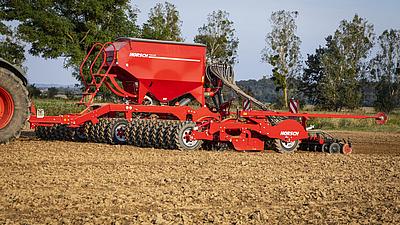
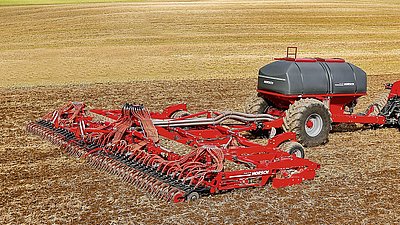
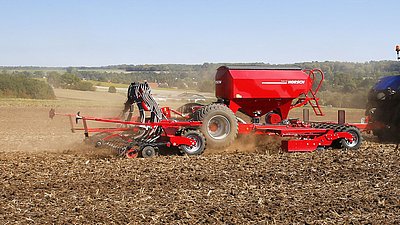
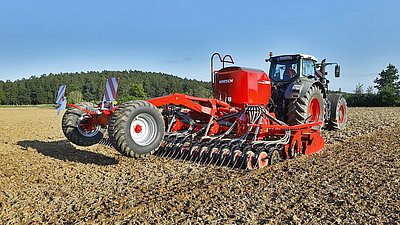
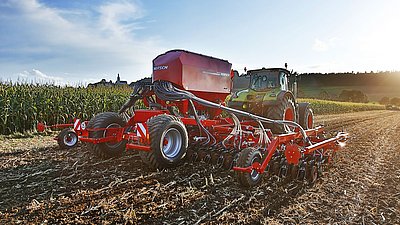
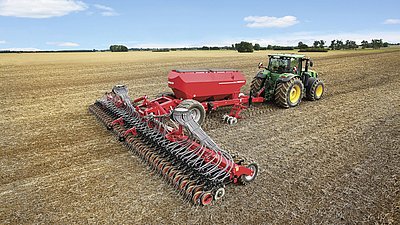
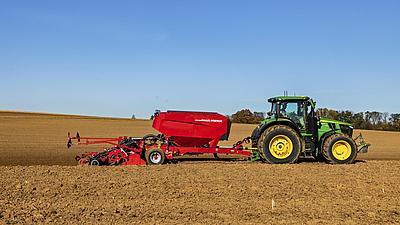
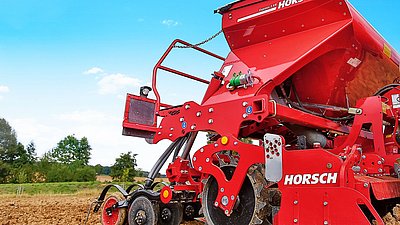
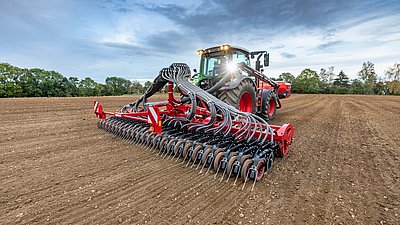
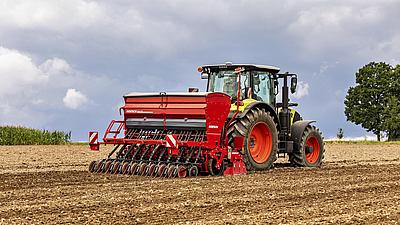
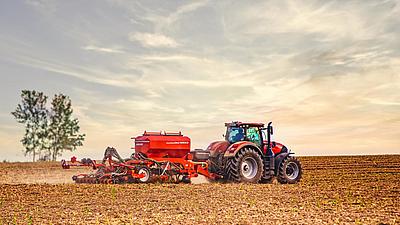
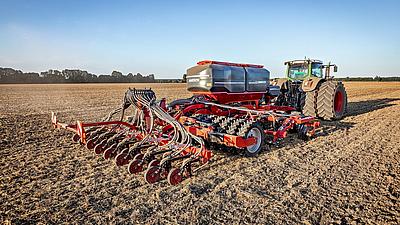
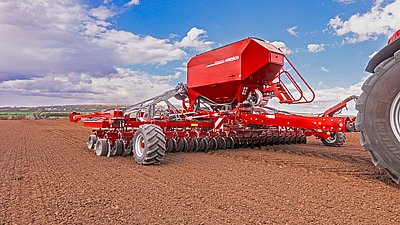

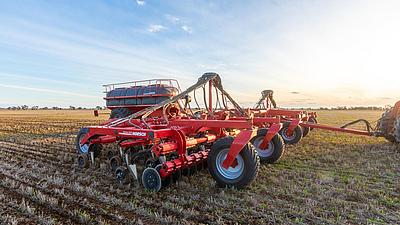
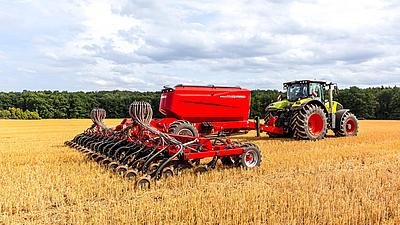
![[Translate to englisch:] [Translate to englisch:]](/fileadmin/_processed_/1/c/csm_sprinter_sl_header_f2d7abcc77.jpg)